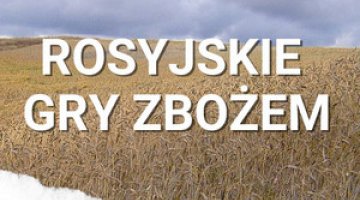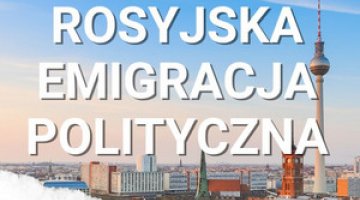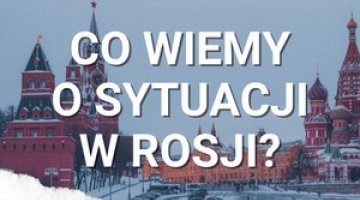Analyses
The escalation of nationalist tensions in Russia
Since the beginning of December, a series of events have taken place in Russia that demonstrate the increase in xenophobic feelings among the Russian public. The best-known and best-attended of these were the December protests in Moscow and several other large cities in Russia, provoked by the death of a football fan during a fight with people coming from the North Caucasus republics. The fact that a single, albeit tragic, violent incident has triggered such a landslide response shows how large the scale of nationality problems in Russian society is. At the same time, it is not apparent that the authorities have any overall, coherent strategy to solve these problems. They have no proper integration policy for minorities. Instead, they have been attempting to counteract the growing symptoms of nationalism by limiting the number of migrants (both internal and external).
Symptoms of xenophobia
The December demonstrations, which were attended in numbers ranging from several hundred to several thousand people, were extremely nationalist in nature; the slogan of ‘Russia for the Russians’ was used, and their participants urged Russia to cut itself off from the Caucasus. Some of the demonstrations turned into riots. They were also accompanied by attacks on persons who were ‘of non-Slavic appearance’ (usually from the Caucasus or Asia). Successive (albeit less numerous) demonstrations by football supporters and nationalists have taken place in January. In December, the number of racist attacks surged; during that month 70 people were attacked, two of whom fatally (for comparison, in December 2009 25 persons were injured in such attacks). Since the beginning of January, three people have been killed, and 9 wounded or beaten.
The government’s reactions
In response to December’s events, initial attempts were made at dialogue with participants in the riots. On 21 December, Vladimir Putin and representatives of the football supporters visited the grave of the latter’s murdered colleague Eduard Sviridov. After the first demonstration on 11 December, the police arrested several dozen of the more aggressive participants, but they were released without charge. Only when the protests started to gather strength were the organisers arrested, and Dmitri Medvedev publicly called for their harsh punishment. In fear of nationalist incidents on the occasion of the New Year celebrations on Red Square, the police arrested several hundred people from the Caucasus and Asia, some of whom were removed to the city limits. In order to avoid another wave of riots, before the January demonstrations several dozen attendees of the previous rallies were pre-emptively arrested in advance. During the demonstrations themselves, the armed forces outnumbered the demonstrators, as a result of which the events passed off peacefully. Also, the demonstration by nationalists planned for 25 January after the bomb attack on Domodedovo airport was nipped in the bud by preventative measures.
The background to the incidents
Russian cities are ethnic mosaics. This is an inheritance from the Soviet Union, but also the result of a constant incoming wave of migrants from poorer parts of Russia and neighbouring countries. Because of the absence of any proper integration policy and the significant cultural differences, the new arrivals assimilate only weakly with the native population. Mostly they live in closed, well-organised groups. Each group often specialises in a particular field of economic life, and often monopolise it and achieve economic success therein, which leads to resentment from their Russian neighbours. In recent years, many emotions have been heightened by the Muslim practice of organising holiday celebrations (including the ritual slaughter of rams) on the streets of large Russian cities. Also, Russians are often shocked to see thousands of Muslims block the streets surrounding mosques during celebrations (for example, there are more than 2 million Muslims in Moscow, but only 5 mosques). Another major problem is the fact that many of the immigrants, particularly those from the Caucasus, belong to organised criminal groups. Both the statistics on racist incidents and the opinion polls indicate a high level of resentment against natives of the Caucasus and Asia among the Russian public. For example, in a poll by the Levada Center from 27 December 2010, 35% of Russians declared that people from the Caucasus arouse negative feelings in them; only 9% of respondents expressed sympathy or respect for them (a figure which fell to 1% in Moscow).
Policy to counteract xenophobia
Russian nationalists were hitherto able to count on the laxity of the state. According to a report by the Russian SOVA Centre, which monitors issues of racism and xenophobia, in 2010 in Russia, out of 283 persons accused of crimes and offences of a racist nature, 102 of them avoided any punishment or only received suspended sentences. On 19 January this year, the branch head of a nationalist organisation was found guilty of the murder of a Tajik and a number of other assaults, but left prison with a suspended sentence of five years. The next day, a court in Moscow commuted the sentences against two nationalists who had been found guilty of seven murders.
The government, concerned by recent events and wishing to avoid a rise in tensions during an election year, has announced the introduction of a policy aimed at counteracting outbreaks of ethnic hatred. During a session of the Russian Council of State on 27 December 2010, Prime Minister Vladimir Putin called for tougher regulations on residency registration, and the introduction of criminal liability for any failure to register residence; this should lead to a reduction in the number of migrants in big Russian cities. At a session of the Board of the FSS on 25 January, Dmitri Medvedev called xenophobia and ethnic violence a threat to the state, and called upon the state services to prevent any manifestations of this threat. After the attack on Domodedovo airport, the government's publicity machine suppressed the information which emerged unofficially at the very beginning of the investigation, namely that North Caucasian terrorists may have been responsible for the attack, in order not to feed the xenophobic mood in society.
Conclusions
It seems that the government’s basic idea to reduce tension on the national scale is to limit the presence of migrants (including those from within Russia proper) in Moscow and other large cities, and to subject members of the Caucasian and Asian communities to yet closer supervision. However, even restrictive provisions for residency registrations will not solve the problem of xenophobia in Russia. Due to the disparity in economic potential, economic migrants will continue to flow into Russian cities from the poor Caucasian and Asian republics of the Russian Federation and the countries which border them. Their presence, though often unwelcome, is essential to ensure an appropriate workforce in Russia.




